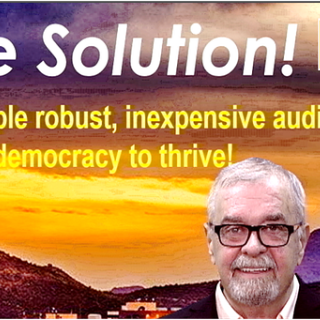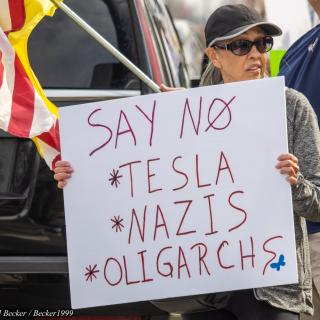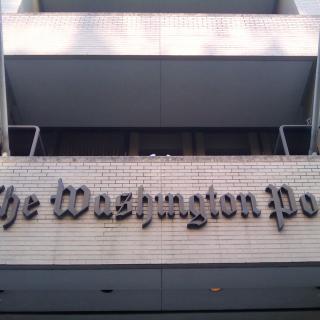Advertisement
What conditions bring peace? What conditions bring war? How do people address them? Many families and communities have split over these topics, as they can bring a great divide of opinion and historical recollection.
This year, August 6 marks the 70th anniversary of the U.S. atomic bombings of Hiroshima and Nagasaki. The bomb “Little Boy” was dropped on the Hiroshima population of 255,000, causing 135,000 casualties: 66,000 dead and 69,000 injured. On August 9, another bomb “Fat Man” was dropped on a population of 195,000 in Nagasaki, causing approximately 64,000 casualties: 39,000 dead and 25,000 injured. These are the Manhattan Engineer District's best available figures.
Mark Stansbery is president of the Columbus Campaign for Arms Control, a local affiliate of Peace Action. He does not believe that a large military society brings peace.
“I challenge the whole idea that societal dependence on violence will successfully bring about an order wherein people want to live and work,” he said. “Militarization is the true cause of many disparities in the world, with the United States having one of the largest military budgets and expenditure outlays. There has never been peace in the United States. If you talk about what is really going on in the inner cities, there are thousands of people being killed each year in very violent actions. For me, I see a militarized state as one we need to be constantly and vigilantly resisting.”
Stansbery is not alone in his thinking. During the late 1970s and early 80s, Ohio was probably the second most organized state – with about 150 organizations – working on a nuclear weapons freeze, he said. “This movement is a way to introduce a different perspective, a way to show that there are people looking at alternatives to war, and to advance a different society where people’s lives are valued more than weapons.”
Even now, many after effects of the atomic bombings remain in Japan, such as: disfiguring scars, leukemia, cataracts, mental retardation, and birth defects. Also listed are cancers of the thyroid, breast, lungs, and salivary glands. According to Brant Ulsh, Ph.D., of the Health Physics Society, the long-term effects of radiation exposure among the survivors have been extensively studied in what is known as the “Life Span Study” (LSS). The LSS is a research program investigating life-long health effects based on epidemiologic (cohort and case-control) studies. Its major objective is investigating the long-term effects of A-bomb radiation on causes of death and incidence of cancer. About 120,000 subjects selected from residents of Hiroshima and Nagasaki, identified through the 1950 national census, have been followed since that time, including 94,000 atomic-bomb survivors and 27,000 unexposed individuals.
“The main effect observed has been an excess of approximately 400 cases of cancer among the approximately 100,000 survivors,” Ulsh said. “That means that about 400 more cancers have been observed in this population than would have been expected from a similar, but unexposed population. This excess has been observed among the survivors who received the highest radiation doses – generally, those who were closest to the detonation site.”
Does this information drive change? If so, how?
“Simply put, we don’t want to keep advancing war as a policy,” Stansbery asserted. “We have helped advance alternatives to war in a lot of different ways, including within schools and jails. We’ve maintained communication with folks around the world and continue to build that international community to look at alternatives to violence and war. We find that most people in this world want to live in a peaceful state.”
“I’ve participated in many demonstrations over the years,” he went on to say, “and I get such a charge when I’m with people who stand together in a public space addressing concerns about our military policies.”
“This is not a wham-bam-thank-you-ma’am type of movement, however. It has to grow gradually and organically,” Stansbery explained, “We try to persuade folks to bring someone with them to events and demonstrations. There’s always the hope of achieving a critical mass of peace-minded people who want to address the larger militarized society. Our work is also about nurturing more leaders who will move people – those who can move five or six people to the next level of understanding.”
“The more we discuss issues with others, the more we try to address our commonalities of understanding. That is how to build power and strength in community as a ‘common unity,’” he stated, “Solidarity, to me, is creating solid and daring relationships. You have to not only accept people as they are, but also challenge long-held perspectives. Sometimes we have to seriously address racial, sexual gender and economic disparities in societies. Individual people are not the problem – it is the policies that need to change.”
Local events commemorating the atomic bombings will take place between August 6 and 9. “Hopefully this year people will come out and show a significant expression of concern about atrocities in the past and a desire to work for what is available and for what is possible. Another world is possible,” Stansbery said.
Hiroshima 70: A Time to Reflect and Commit – Peace, Planet, People, Profit
Central Ohioans for Peace Events Aug. 6-9, 2015
Aug. 6: Peace Vigil at Goodale Park Gazebo and Pond, Park Street and Buttles Avenue, northeast side of the park. 7:30-8:30pm for a sunset ceremony marking the 70th year of the atomic bombings of Hiroshima and Nagasaki, Japan.
Aug. 7: "Message from Hiroshima" film, Belle's Bread in Kenny Centre, 5pm. Narrated by George Takai, This powerful and intimate documentary provides an inside look at the devastating effects of the first atomic bomb ever used, as depicted in heart wrenching testimonials from survivors, and computer generated recreations of the city and way of life that were lost.
Aug. 8: Peace Conference at First Unitarian Universalist Church, 93 Weisheimer Road, Columbus. 10am-4pm. The History calls US to resist Wars and Oppression. Participants include John Carlarne, Greg Elish, Julie Hart, Ruben Herrera, Kevin Kamps, Janet McLaughlin, Marc Simon, Aramis Sundiata and Harvey Wasserman.
Aug. 9: World Premier of Taubes VII (Hiroshima Set) by Rocco DiPietro. Gathering at 7:30pm. Public Concert featuring original music by local composer Rocco DiPietro and musicians that reflect on reflection and commitment to a world of peace, justice and ecological balance. Featuring Weiyi Pan (gu zheng), Larry Marotta (guitar), David Nelson Tomassaci (trombone), Romulo Vazquez (Asian instruments), and Rocco DiPietro (piano). The concert will be in Columbus Mennonite Church, 35 Oakland Park Avenue.
The Central Ohioans for Peace meet regularly on Monday evenings at 7pm at the Columbus Mennonite Church, 35 Oakland Park Avenue. Each meeting has a different peace-oriented presentation. On August 24, Columbus Free Press Editors Bob Fitrakis and Suzanne Patzer will present on their week-long "To Cuba with Love" delegation with Code Pink. In February they joined in the first large U.S. people-to-people visit to Cuba since the warming of relations last December. They will share their experiences touring the country, meeting with public officials including Mariela Castro, visits with Cuban people and impressions of the state of the nation under the U.S. embargo. Also presenting will be Lisa Valanti, longtime Pastors for Peace activist. They will lead a discussion on the future of U.S.-Cuban relations. Contact Melonie Buller, mlbuller@sbcglobal.net for more information.
Peace activists gather for a peace vigil at 161 and High Street in Worthington every Saturday at 12noon. Bring your own sign. This has been going on since prior to the Iraq War.
For more information on events or to join the Central Ohioans for Peace, contact Mark D. Stansbery, 614-252-9255, walk@igc.org, or visit www.columbuspeacenetwork.org.



